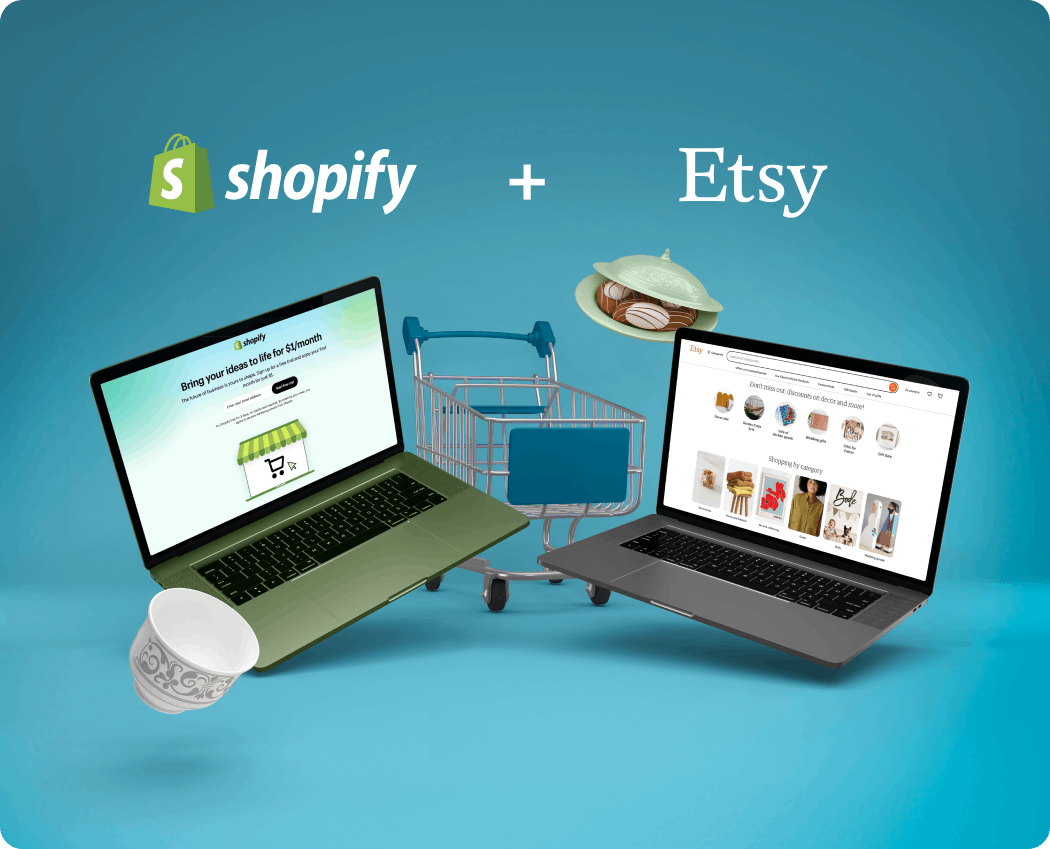All Ideas For Improvement : Shopify Integration and Syncing
In the dynamic world of ecommerce, integrating and syncing different platforms and services with your Shopify store can be a game-changer. These integrations allow you to streamline operations, enhance customer experiences and expand your business. In this guide, we'll explore the concepts of Shopify integration and syncing, provide insights on how to acquire a Shopify API key for third-party integration offering tips on making the most of these integrations.








What is Shopify Integration?
Shopify integration refers to the process of connecting your Shopify store with third-party apps, services, or platforms to expand your store’s functionality. Through these integrations, you can sync your Shopify store with various ecommerce tools and services, including marketplaces like Amazon or Etsy, email marketing platforms like Mailchimp, CRM systems like Salesforce, customer support tools like Zendesk, or your social media accounts.
The objective of integrating these services is to simplify operations, automate tasks, and improve the overall efficiency of your ecommerce business. By enabling seamless data transfer and real-time synchronization between your store and external systems, you can provide a better experience to your customers.
How to Get a Shopify API Key for Third-Party Integration
To initiate third-party integrations, you often need a Shopify API key. The API (Application Programming Interface) key acts as a bridge between your Shopify store and external apps, allowing them to communicate effectively. Here’s how you can get a Shopify API key:
- Log in to Your Shopify Store: Go to your Shopify admin, log in using your credentials.
- Access the Shopify Admin Page: From the Shopify admin, navigate to the “Apps” section located on the left side of the dashboard.
- Visit the App Store: Within the “Apps” section, you’ll find the “Visit the Shopify App Store” button. Click on it.
- Search for the App: In the App Store, search for the specific third-party app or service you want to integrate with your Shopify store. For example, if you want to integrate with Mailchimp, search for “Mailchimp” in the search bar.
- Install the App: Once you find your desired app, click on it to access more details. If you decide to proceed, click “Add App” or “Install App.”
- Create an API Key: As part of the app installation process, you might be prompted to create an API key. Follow the app’s instructions to generate the key.
- Configure the Integration: After creating the API key, the app will guide you through the configuration process. This typically involves granting permissions and choosing synchronization settings.
- Start Using the Integration: Once the integration is set up, your Shopify store will be connected to the third-party app, then data can start flowing between them.
- Manage and Monitor: Be sure to monitor the integration to ensure it’s functioning as expected. You may need to revisit the app settings to make adjustments if necessary.
How to Make the Most of Shopify Integration
Now that you understand what Shopify integration is and how to obtain an API key, let’s delve into making the most of these integrations. Here are some tips:
- Choose Your Integrations Wisely: Not every integration is suitable for your business. Consider your unique needs, choose integrations that align with your goals.
- Prioritize Efficiency: The primary goal of integrations is to enhance efficiency. Ensure that the integration automates tasks, saves you time, and reduces manual work.
- Customize the Integration: Many integrations allow for customization. Tailor the settings to match your business processes and customer expectations.
- Train Your Team: If multiple team members will use the integrated systems, ensure they are well-trained to use these tools effectively.
- Regularly Update: Keep your integrated apps up to date. Developers often release updates that improve functionality, security, and performance.
- Monitor Performance: Continuously monitor the performance of your integrations. Address any issues promptly to avoid disruptions to your ecommerce operations.
- Security and Privacy: Be mindful of data security and privacy, especially when integrating with third-party services. Protect customer data and stay compliant with regulations.
- Amazon: Seamlessly list and sell your products on the world’s largest online marketplace.
- Etsy: Expand your reach by integrating with Etsy, a leading platform for handmade and vintage items.
- Mailchimp: Elevate your email marketing with Mailchimp to engage and retain your customers.
- Salesforce: Manage your customer relationships and sales processes with one of the most powerful CRM platforms.
- Zendesk: Provide top-notch customer support with Zendesk’s robust helpdesk solutions.
Ecommerce has rapidly increased, leaving businesses to compete for success. By integrating your Shopify store with the right apps and services, such as popular social media platforms, you can drastically improve operations, customer experience, and online growth. Connecting with ecommerce platforms, marketing tools, CRM systems, and customer support solutions can make all the difference for your business.
Most Popular Shopify Integrations
Shopify offers a wide array of integrations to help you streamline your operations, grow your business, and take advantage of the Shopify Plus platform. Some of the most popular integrations include:
These integrations, among others, can help you optimize various aspects of your ecommerce business. They cater to different needs, from expanding your sales channels to improving customer support and automating your marketing efforts.
With the right integration and SDK support, you can take your Shopify store to new heights, boost efficiency, and deliver exceptional experiences to your customers. It’s all about making the most of the ecommerce ecosystem and staying ahead in the competitive world of online retail.